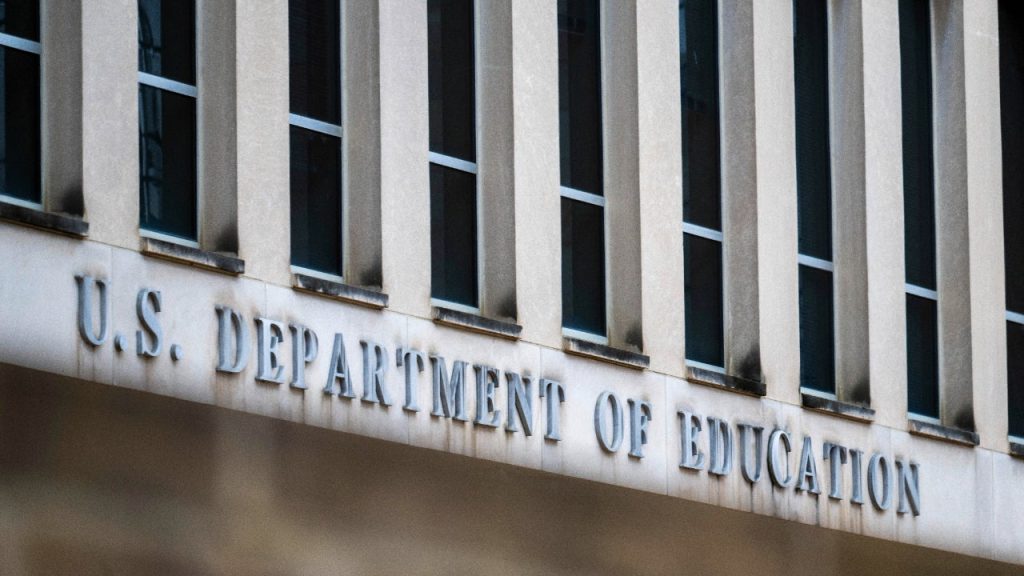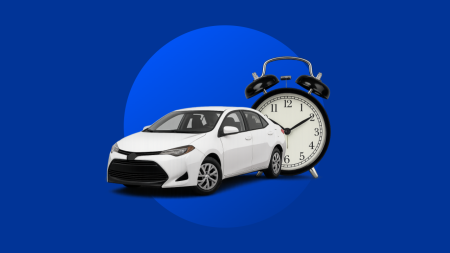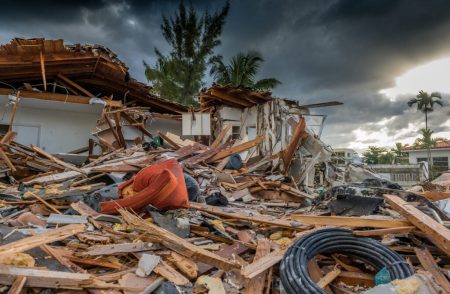Key takeaways
- Congressional Republicans are considering closing the federal Direct PLUS Loan program in an effort to limit federal loan borrowing.
- Canceling this program could have many downstream effects, including increased reliance on private student loans for grad students and parents of undergrads.
- Student loan borrowers still have many options to cover education costs.
If paying for college is a buffet — picture the student and their family browsing for various aid — one item may soon be coming off the menu.
Congressional Republicans are progressing toward budget reconciliation that could close the federal Direct PLUS Loan program (in addition to cuts across other sectors). In this process, the House and Senate may adopt much of the College Cost Reduction Act (CCRA), which would include removing this type of student loan for graduate students and the parents of undergrads.
But some experts in the know say that congressional committees currently hunting for budget cuts — the next step of reconciliation — might be looking in the wrong place: The PLUS Loan program doesn’t actually cost Uncle Sam any money.
“This is one of the only portions of the [federal loan] portfolio that does make a profit, which says a lot about why [it] would be used as kind of a [political] football,” says Consumer Financial Protection Bureau (CFPB) student loan ombudsman Julia Barnard. “And just so everybody knows, if the government does make a negative subsidy — or what some might think of as a profit — on any part of the portfolio, that money immediately goes back to the Treasury. To be used for other things that we probably care about as a society.”
Besides the federal government’s bottom line, though, closing the PLUS Loan program could have cascading effects for higher education financing for years to come.
What are Direct PLUS Loans?
Direct Loans are federal student loans that parents and students can borrow from the Department of Education for participating schools. Direct PLUS Loans are available to parents of an undergraduate student and graduate or professional students. Other Direct Loans include Direct Subsidized Loans, Direct Unsubsidized Loans and Direct Consolidation Loans.
Why federal Direct PLUS Loans are on the chopping block
The CCRA, which gained more than 150 Republican cosponsors during Congress’s last session, isn’t the most recent attempt to shutter the PLUS Loan program. In January, the Senate introduced the Graduate Opportunity and Affordable Loans Act with the same aim.
Related: Federal student loan legislation tracker
The question is, why cast such a bright spotlight on PLUS Loans?
Conservative lawmakers make an accountability argument: If Congress limits federal loan borrowing, universities will have to compete for students and be less able to drive up tuition costs that shift the overwhelming expense to Mr. and Mrs. Taxpayer.
If that doesn’t happen — or until it does — graduate students and undergraduates’ parents may flock to private lenders as an alternative funding source. While former Education Department Under Secretary James Kvaal says he’s not thrilled about that outcome, he also advocates for federal lending that’s more responsible.
Holding schools — who are unsurprisingly arguing against shutting off the firehose of federal funding — accountable could be a spot for bipartisan agreement.
“You do see people taking out loans to get degrees that are never intended to lead to a high-wage job — it might be a divinity school or a theater school, or it could be that the program is routinely not very good,” says Kvaal. “So, we do need to have a real conversation about when loans are appropriate for graduate schools and when those schools are intended to deliver an ROI for students.”
We also need to think about investing in graduate programs that serve lots of low-income students and students of color or that serve some of the non-economic goals of our society. Don’t just stop by cutting off loans, but [let’s] have a real conversation about how we’re going to pay for those things.
— James Kvaal, former Department of Education under secretary
Related: Dismantling the Education Department won’t fix how Americans pay for college
3 impacts of canceling the Direct PLUS Loan program
About 5.4 million borrowers owe $222.4 billion in federal Direct PLUS Loans, according to the Department of Education’s Federal Student Aid (FSA) office. That’s about 13 percent of the country’s outstanding student loan debt. Closing the PLUS Loan program would bar new applicants, while existing borrowers would still be legally obligated to repay their debt.
1. More-qualified borrowers relying on private student loans
If you think of America’s education debt as a 10-slice pie, eight slices would be federal loans and two would be private. Get rid of PLUS Loans and the ratio is sure to change.
Just don’t expect any argument from banks, credit unions and online lenders.
“This has been on the wish list of the private student loan companies for over a decade,” says the CFPB’s Barnard. “Before we had [PLUS Loans], the private student loan companies were able to offer much larger loans to graduate students. And of course, as everyone can imagine, graduate students are more likely to earn higher incomes. So, that’s a population that the private student loan market is very interested in.”
Related: CFPB ombudsman’s message to federal student loan borrowers: ‘Demand’ what you’re ‘legally entitled to’
If you (as a grad student or parent of an undergrad) or your potential cosigner has strong credit and income, relying on private student loans might not be such an issue, considering federal loan rates have been on the rise for four straight years (Congress sets them annually).
| Loan type | 2024-25 interest rate | Fee |
| Federal Direct Grad PLUS Loans | 9.08% | 4.228% |
| Private graduate student loans | 3.47% to 14.83%* | Varies by lender |
| Federal Direct Parent PLUS Loans | 9.08% | 4.228% |
| Private student loans for parents | 3.39% to 17.99* | Varies by lender |
| *Rates advertised by Bankrate’s partner lenders as of April 2025 | ||
“When I worked in a financial aid office like 15 years ago, [Parent] PLUS Loan interest rates were around the seven-ish percent mark,” says Colleen Campbell, former executive director of the office of loan portfolio management at the Department of Education. “And so it was a value proposition that was somewhat neutral between, ‘Do you get a home equity line of credit, or do you get a PLUS Loan?’ The challenge now is that, because of where we’re at in terms of things like inflation or [where] interest rates are at for federal student loans … the [PLUS] programs seem really tenuous to people.”
2. Less-qualified borrowers facing high private loan rates (if they’re approved at all)
The problem with removing a federal loan slice of the pie is that they’re the predominant option for a reason: They provide fixed interest rates and far-reaching repayment safeguards — and on a mass scale, to borrowers of most credit tiers. In fact, FSA only requires that PLUS Loan applicants don’t have “adverse credit history,” which includes a recent delinquency, default or bankruptcy. There’s no mention of a minimum credit score.
“PLUS Loan credit standards are extremely low, akin to the mortgage bonanza before the Great Recession, to the point where we are making hundreds of thousands of dollars in loans to parents [and grad students] with very low incomes,” says Campbell.
Private student loans, by comparison, award competitive rates only to students with strong credit or, more commonly, a creditworthy cosigner. They also feature fewer protections than federal loans. Most notably: You can’t just change your repayment plan as you wish, or require your lender (or loan servicer) to temporarily pause your monthly dues.
So, it’s reasonable to argue that the absence of PLUS Loans would drive more borrowers to private loans — at varying levels of risk. Applicants with weaker credit, lower incomes could conceivably face higher interest rates or, worse, rejection.
Taking it one step further: It’s logical to assume that some grad students and parents would also seek out loans from less scrupulous lenders that have intentionally loose eligibility criteria. There are many pitfalls of getting a student loan with bad credit.
“Something that we have learned in over a decade of CFPB work is that borrowers really will sign pretty predatory contracts in order to go to school,” says Barnard. “And I understand why people feel that they have to make a deal with the devil in this economy.”
3. Students, families opting for lower-cost schools
Colleges and universities are anticipating the largest class of first-year students ever next fall, according to New York Times reporting, but that trend could soon reverse.
After all, if students and their families are shut out of private student lending — either because the interest rates and fees are too high or because they can’t gain loan approval — they might have to skip their preferred but pricier four-year university.
Possible downstream effects of PLUS Loans’ dissolution
- Students opting for community colleges, other lower-cost schools
- States ramping up efforts of providing financial aid
- Already-struggling private colleges, including Historically Black Colleges and Universities (HBCUs), facing closure
Campbell anticipates schools mounting a pressure campaign on the elected officials who serve their districts and states. That’s what occured when the Obama Administration sought to stiffen the eligibility criteria for PLUS Loans about a decade ago.
“So what we saw back in 2013 was that some colleges, in particular, higher-cost colleges that enroll a lot of low-income borrowers, like HBCUs in particular in this situation, really had a strong response to any kind of [heightened] eligibility restrictions… And so I think that we would likely see that this time as well.”
Then the question turns from whether the PLUS Loan program should be effectively canceled to whether there remains enough motivation to do it.
“This is really when the rubber hits the road in higher ed,” adds Campbell. “Every senator has dozens, if not hundreds, of colleges in their state, and every single representative in Congress has a college in or a campus that employs people that brings money into their district — and they will immediately get the knock at their door should something in their district be threatened.”
What’s your next step?
If you or your student are in school or on their way, you might be concerned about losing an option for higher education financing. Don’t stress, at least not yet. Congressional Republicans haven’t yet finalized their budget, so keep an eye on student loan news coverage.
Know that, long-term, you’ll still have various options for covering your education costs (though attending a lower-cost school is worthy of your consideration). To get a head start on these options, consider our guide for how to pay for grad school and how to pay for college with no money.
Read the full article here









